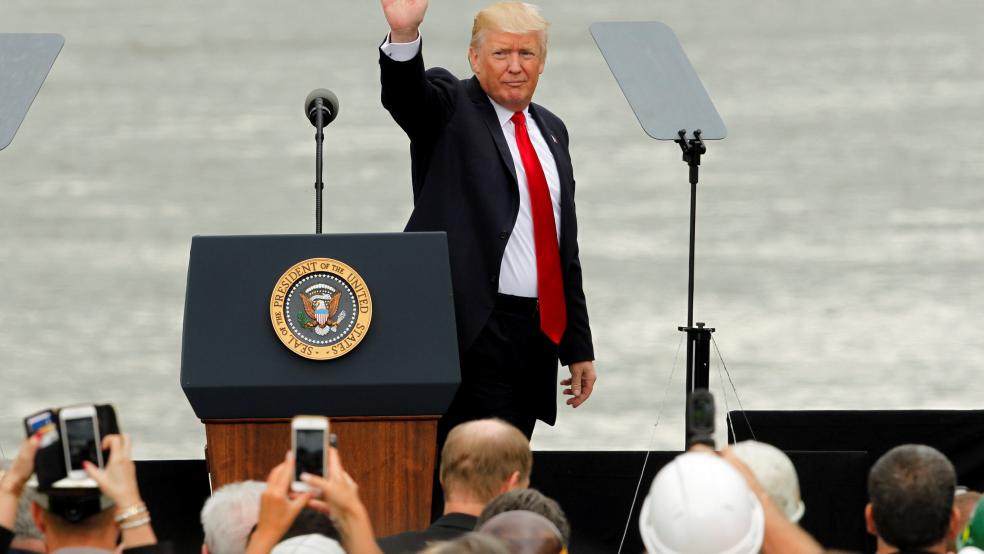Some of his claims were spot on; some were not. Here are some of Trump's statements about the economy, with context:
JOBS AND UNEMPLOYMENTTrump said since the 2016 election, 2.4 million new jobs were created, a claim that has validity. The economy did add an average of 171,000 positions per month in 2017. It has been doing that, however, since 2010, a record run of job creation that makes it hard to distinguish between the momentum developed under Trump and his predecessor, President Barack Obama.Strictly on a calendar basis, for Obama’s two presidential terms running from January 2009 through December 2016, the economy added 109,000 jobs per month. But he inherited an economic mess. The United States began losing jobs consistently in early 2008, at the end of President George W. Bush's administration, and by the time Obama took over, it was hemorrhaging hundreds of thousands of jobs a month.The recession officially ended in June 2009, and from that point to the end of Obama’s second term, job growth was 159,000 per month, less than during Trump’s first year.The jobs market did not reach its low point until February 2010. From that point to the end of Obama’s second term, job growth averaged 190,000 per month, more than Trump’s first year.STOCK MARKETTrump loves to discuss the success of the stock market and used his podium on Tuesday to do that again, noting it had smashed one record after another and gained trillions of dollars in value. Trump has some reason to gloat there.The Dow Jones Industrial Average was around 18,000 in early November 2016, just prior to the election. It breached 20,000 the week after the inauguration, the start of a record setting rise to above 26,000 this month.There is little question the change in the regulatory environment and the corporate tax cut helped fuel the rise. But the administration has received some help along the way since 2016 was the first year in many when Europe and China worked free of immediate risks to growth, and the global economy strengthened as those “headwinds” lifted. The Dow Jones average has been rising, with some weak spots, since March 2009 when it bottomed out at around 6,500. TAX CUTSTrump touted his 2016 tax overhaul as the "biggest tax cuts and reforms in American history."The legislative package passed in December was more far-reaching than some had expected Republicans to pass, but it did not change the U.S. tax code as fundamentally as the 1986 tax reform approved under former President Ronald Reagan.The Committee for a Responsible Federal Budget, a fiscal conservative group in Washington, found last year that the Trump tax cut was about the 12th-largest cut as a percentage of gross domestic product since 1918 and the 4th-largest in inflation-adjust dollars.CAR COMPANIESTrump noted that many car companies are building and expanding their plants in the United States, something he said the country had not seen for decades.That is not the case. In the last few decades, a number of car companies have set up plants, including Subaru in Indiana in 1989, Mercedes in Alabama in 1993, BMW in South Carolina in 1994, Honda in Alabama in 2001, Hyundai in Alabama in 2005, Kia in Georgia in 2009, and Volkswagen in Tennessee in 2011. (Reporting by Jeff Mason, Howard Schneider, Damon Darlin; Editing by Kevin Drawbaugh and Alistair Bell)Factbox: Trump's statements on the U.S. economy in address: some hits, some misses

STEPHANIE KEITH



